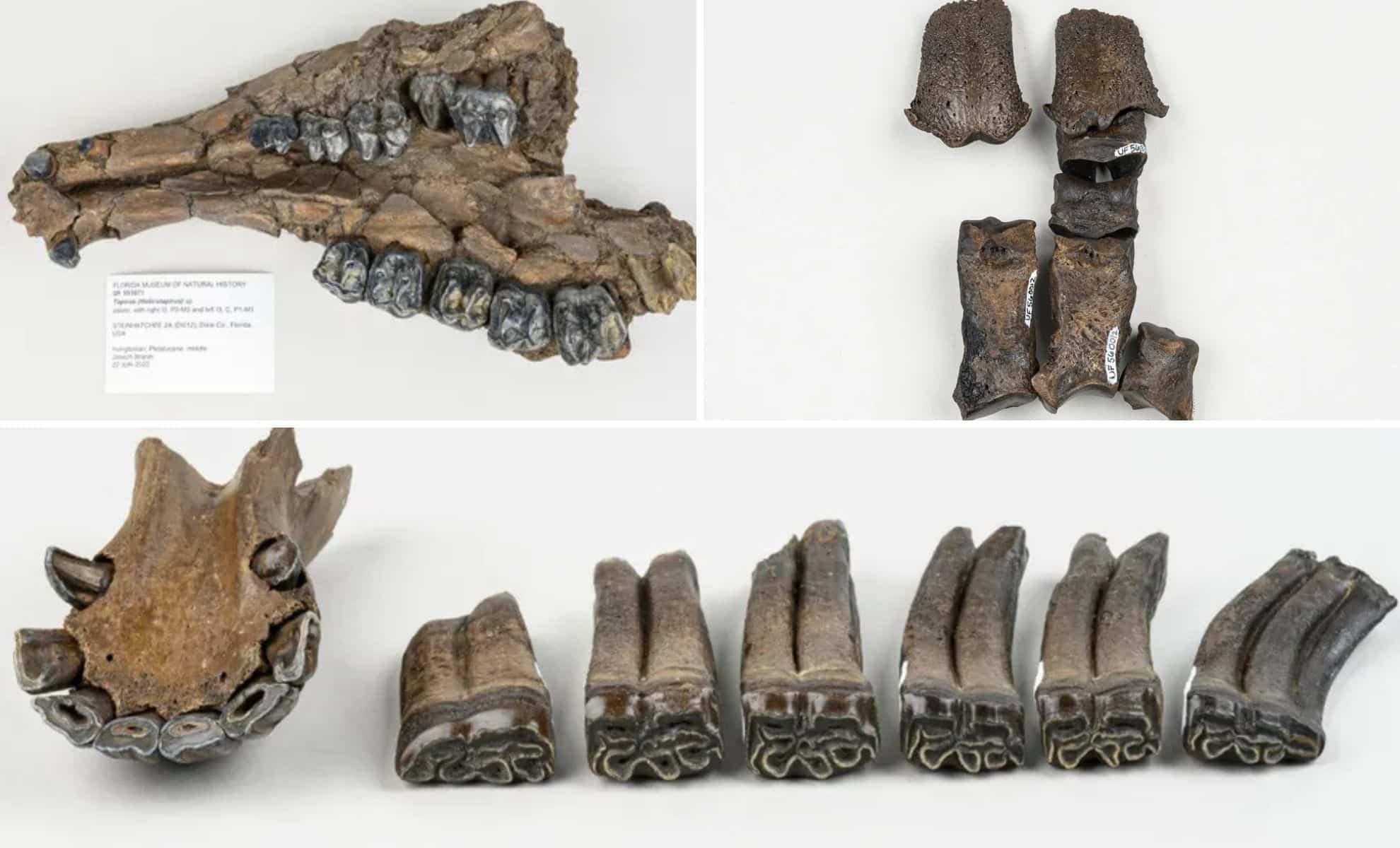
A remarkable prehistoric fossil site has been discovered beneath the waters of Florida’s Steinhatchee River, showcasing a 500,000-year-old Ice Age burial ground. This astonishing find comprises over 500 fossils, including the remains of colossal armadillos, ancient horses, sloths, and potentially a new species of tapir. Once a prehistoric sinkhole, this location functioned as a natural trap for wildlife during the Irvingtonian North American Land Mammal Age, spanning from 1.6 million to 250,000 years ago.
The well-preserved fossils offer a rare opportunity to explore the evolutionary changes occurring among species in North America during a time when fossil evidence is typically scarce. Such discoveries could significantly enhance our understanding of faunal changes and ecosystem evolution during the Ice Age.
Impactful Discovery Acknowledged by Scientists
Underwater fossil sites are seldom found, yet the newly identified 500,000-year-old sinkhole in Florida’s Steinhatchee River has become a treasure trove of Ice Age fossils. A scientific article featured in the journal Fossil Studies explains how collectors Robert Sinibaldi and Joseph Branin stumbled upon the site in 2022 while diving in the river. What began as isolated teeth and bones turned into a remarkably well-preserved fossil cache, prompting the Florida Museum of Natural History to undertake a comprehensive excavation to study its significance.
Sinibaldi noted that the sheer abundance and exceptional condition of the fossils immediately caught their attention:
“It wasn’t just quantity, it was quality. We recognized we had an important site, but we had no idea how significant it was.”
Since then, specialists at the Florida Museum of Natural History have been diligently examining the fossils, striving to reconstruct the prehistoric ecosystem that once flourished in this area during the Ice Age.


Fossils Shed Light on Evolutionary Changes
Among the most fascinating discoveries are fossils from an extinct giant armadillo-like species known as Holmesina. Researchers have long recognized a size increase within this genus, evolving from Holmesina floridanus, which weighed about 150 pounds, to Holmesina septentrionalis, which could reach up to 475 pounds. However, fossil evidence that documented this shift had been scarce—until now.
Rachel Narducci, the vertebrate paleontology collections manager at the Florida Museum, highlighted how these fossils provide critical proof of this evolutionary transition:
“It’s essentially the same animal, but over time it grew significantly larger, and the bones changed enough that researchers categorized it as a distinct species.”
The identification of ankle and foot bones from Holmesina revealed that the animal’s size expanded before anatomical changes fully followed, offering a unique perspective on the gradual process of evolution.
“This provided additional evidence that anatomy lagged behind size increases. They grew larger before their bone structure adapted to this change.”
This discovery questions the traditional view that anatomical and size changes occur simultaneously, illustrating that species can attain greater sizes before their skeletal adaptations catch up.


Could This Be a New Species of Tapir?
Among the most thrilling elements of this discovery is a skull of an ancient tapir, a mammal resembling a pig with a stubby trunk. This fossil exhibits characteristics never documented before, suggesting it could represent a new species.
However, Richard Hulbert, the study’s lead researcher, urges caution in making any firm conclusions:
“We need more remains to accurately determine the status of this tapir. It could be a new species or simply an atypical individual within its population.”
This implies that further excavations and research are essential before scientists can ascertain whether this tapir is a distinct species or an aberration of a known one.
Insights from Fossils About the Ice Age Habitat
Of the 552 fossils retrieved, around 75% belonged to a primitive type of caballine horses, the ancestors of today’s domestic horses. The abundance of these horse fossils suggests that Florida’s landscape 500,000 years ago was markedly different from what we see today.
“For the first time, we had individuals that were complete enough to provide us with upper teeth, lower teeth, and the front incisors from the same specimen,” stated Hulbert, underscoring the exceptional preservation of the fossils.
These well-preserved horse teeth could enable researchers to investigate the diet and ecology of Ice Age horses in unmatched detail, contributing to a reconstruction of the ancient ecosystems where they thrived.
The large number of horse fossils indicates that Florida’s Big Bend region, which is heavily forested today, may have once been an expansive grassland, better suited for large herbivores. This discovery offers vital insights into prehistoric climate shifts and habitat changes, aiding scientists in understanding how ecosystems evolved over countless years.









